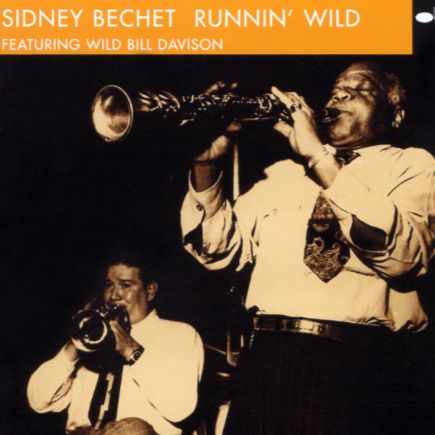When the Saints Go Marching In: entre ferveur spirituelle et improvisation légendaire
When the Saints Go Marching In, souvent abrégée sous le nom de The Saints, appartient au répertoire des negro spirituals, tout en portant l’empreinte de la musique folk dont elle reprend certains motifs mélodiques. Elle constitue une adaptation légère, apparue en 1927, d’un chant antérieur intitulé When the Saints Are Marching In, composé en 1896 par James Milton Black sur des paroles de Katharine Purvis.
Inscrite dans la tradition funéraire de La Nouvelle-Orléans, cette chanson jouait un rôle central dans les cortèges accompagnant les défunts : interprétée d’abord comme une marche lente et recueillie jusqu’au cimetière, elle se métamorphosait au retour en une version plus vive et festive, dans l’esprit du hot jazz ou du Dixieland, incarnant le passage du deuil à l’espérance.
Parmi les nombreuses reprises de When the Saints Go Marching In, l’une des plus inattendues demeure celle du légendaire Million Dollar Quartet – Elvis Presley, Carl Perkins, Jerry Lee Lewis et Johnny Cash – enregistrée de manière improvisée lors d’une session commune en studio à Memphis, le 4 décembre 1956.
Sidney Bechet: entre tradition et virtuosité
Enregistrée à New York le 21 janvier 1949 pour l’album Runnin’ Wild, cette version de When The Saints Go Marching In réunit Sidney Bechet au saxophone soprano et ses Blue Note Jazzmen : Wild Bill Davison à la cornette, Art Hodes au piano, Walter Page à la contrebasse et Fred Moore à la batterie. Bechet, également clarinettiste, avait quitté les États-Unis dans les années 1920 pour s’installer en France, où il jouissait d’une immense renommée. Ce séjour européen marqua durablement son style, nourri à la fois par l’héritage de la Nouvelle-Orléans et par une sensibilité plus lyrique et personnelle.
Dans cet enregistrement, la formation reprend le modèle classique du jazz New Orleans, mais Bechet y insuffle une intensité singulière. Son jeu expressif et virtuose transforme ce traditionnel chant religieux en véritable célébration musicale, débordante d’énergie et de vitalité. La sonorité claire et tranchante de son saxophone soprano — encore peu utilisé dans le jazz à l’époque — donne à l’ensemble une couleur éclatante.
When the Saints Go Marching In: entre fervor espiritual e improvisación legendaria
When the Saints Go Marching In, a menudo abreviada como The Saints, forma parte del repertorio de los negro spirituals, aunque conserva también la huella de la música folk, de la cual retoma ciertos motivos melódicos. Se trata de una ligera adaptación, aparecida en 1927, de una canción anterior titulada When the Saints Are Marching In, compuesta en 1896 por James Milton Black con letra de Katharine Purvis.
Inscrita en la tradición funeraria de Nueva Orleans, esta canción desempeñaba un papel central en los cortejos fúnebres: se interpretaba primero como una marcha lenta y solemne hasta el cementerio, y al regreso se transformaba en una versión más animada y festiva, en el espíritu del hot jazz o el Dixieland, simbolizando la transición del duelo a la esperanza.
Entre las múltiples versiones de When the Saints Go Marching In, una de las más inesperadas es la del legendario Million Dollar Quartet – Elvis Presley, Carl Perkins, Jerry Lee Lewis y Johnny Cash – grabada de manera improvisada durante una sesión conjunta en el estudio de Memphis, el 4 de diciembre de 1956.
Sidney Bechet: entre la tradición y la virtuosidad
Grabada en Nueva York el 21 de enero de 1949 para el álbum Runnin’ Wild, esta versión de When The Saints Go Marching In reúne a Sidney Bechet al saxofón soprano junto a sus Blue Note Jazzmen: Wild Bill Davison a la corneta, Art Hodes al piano, Walter Page al contrabajo y Fred Moore a la batería. Bechet, también clarinetista, había abandonado Estados Unidos en los años veinte para instalarse en Francia, donde gozaba de una enorme popularidad. Esta etapa europea marcó profundamente su estilo, enriquecido por la herencia de Nueva Orleans y una sensibilidad más lírica y personal.
En esta grabación, el grupo retoma el modelo clásico del jazz de Nueva Orleans, pero Bechet le infunde una intensidad singular. Su interpretación, expresiva y virtuosa, transforma este canto religioso tradicional en una verdadera celebración musical, desbordante de energía y vitalidad. El timbre claro y cortante de su saxofón soprano —un instrumento aún poco frecuente en el jazz de la época— aporta al conjunto un colorido brillante y distintivo.
When the Saints Go Marching In: tra fervore spirituale e improvvisazione leggendaria
When the Saints Go Marching In, spesso abbreviata in The Saints, appartiene al repertorio dei negro spirituals, pur conservando l’impronta della musica folk da cui riprende alcuni motivi melodici. È una leggera rielaborazione, risalente al 1927, di un brano precedente intitolato When the Saints Are Marching In, composto nel 1896 da James Milton Black su testo di Katharine Purvis.
Inserita nella tradizione funebre di New Orleans, questa canzone occupava un ruolo centrale nei cortei funebri: veniva eseguita inizialmente come una marcia lenta e solenne fino al cimitero, per poi trasformarsi al ritorno in una versione più vivace e festosa, nello spirito dell’hot jazz o del Dixieland, a simboleggiare il passaggio dal lutto alla speranza.
Tra le numerose reinterpretazioni di When the Saints Go Marching In, una delle più sorprendenti resta quella del leggendario Million Dollar Quartet – Elvis Presley, Carl Perkins, Jerry Lee Lewis e Johnny Cash – registrata in modo improvvisato durante una sessione comune in studio a Memphis, il 4 dicembre 1956.
Sidney Bechet: tra tradizione e virtuosismo
Registrata a New York il 21 gennaio 1949 per l’album Runnin’ Wild, questa versione di When The Saints Go Marching In vede Sidney Bechet al sassofono soprano con i suoi Blue Note Jazzmen: Wild Bill Davison alla cornetta, Art Hodes al pianoforte, Walter Page al contrabbasso e Fred Moore alla batteria. Bechet, anche clarinettista, aveva lasciato gli Stati Uniti negli anni Venti per stabilirsi in Francia, dove godeva di una popolarità straordinaria. Questo periodo europeo segnò profondamente il suo stile, nutrito allo stesso tempo dalla tradizione di New Orleans e da una sensibilità più lirica e personale.
In questa registrazione, l’ensemble riprende la classica formula del jazz di New Orleans, ma Bechet le infonde un’intensità tutta sua. Il suo stile espressivo e virtuosistico trasforma questo tradizionale canto religioso in una vera e propria celebrazione musicale, traboccante di energia e vitalità. Il suono nitido e incisivo del suo sassofono soprano — ancora raro nel jazz dell’epoca — dona al brano una brillantezza particolare.
When the Saints Go Marching In: between spiritual fervor and legendary improvisation
When the Saints Go Marching In, often shortened to The Saints, belongs to the tradition of negro spirituals, while also bearing the influence of folk music, from which it borrows several melodic elements. The song is a light adaptation, dating back to 1927, of an earlier piece titled When the Saints Are Marching In, composed in 1896 by James Milton Black with lyrics by Katharine Purvis.
Rooted in the funeral traditions of New Orleans, this song played a central role in processions for the deceased: initially performed as a slow, solemn march on the way to the cemetery, it would transform into a more upbeat and celebratory version on the return journey, in the style of hot jazz or Dixieland, symbolizing the transition from mourning to hope.
Among the many renditions of When the Saints Go Marching In, one of the most unexpected remains that of the legendary Million Dollar Quartet – Elvis Presley, Carl Perkins, Jerry Lee Lewis, and Johnny Cash – recorded spontaneously during a joint studio session in Memphis on December 4, 1956.
Sidney Bechet: between tradition and virtuosity
Recorded in New York on January 21, 1949, for the album Runnin’ Wild, this version of When The Saints Go Marching In features Sidney Bechet on soprano saxophone with his Blue Note Jazzmen: Wild Bill Davison on cornet, Art Hodes on piano, Walter Page on bass, and Fred Moore on drums. Bechet, also a clarinetist, had left the United States in the 1920s to settle in France, where he enjoyed immense fame. His years in Europe left a lasting mark on his style, enriched by the spirit of New Orleans and a more lyrical, personal sensibility.
In this recording, the group follows the classic New Orleans jazz setup, but Bechet brings a unique intensity to the performance. His expressive and virtuosic playing transforms this traditional religious hymn into a true musical celebration, brimming with energy and life. The sharp, clear tone of his soprano saxophone — still a rarity in jazz at the time — adds a distinctive brilliance to the session.


